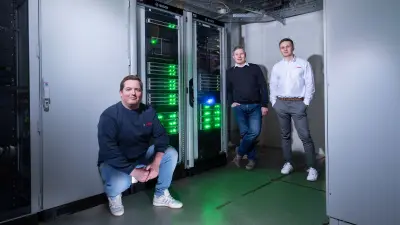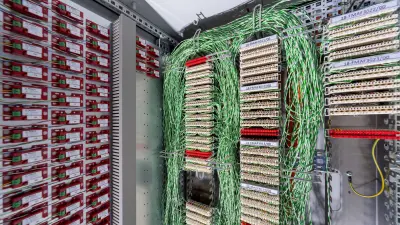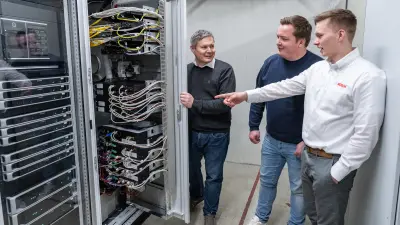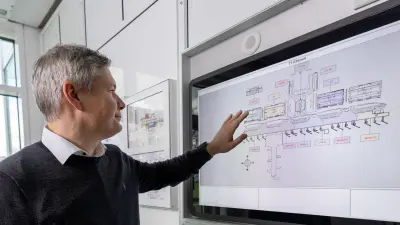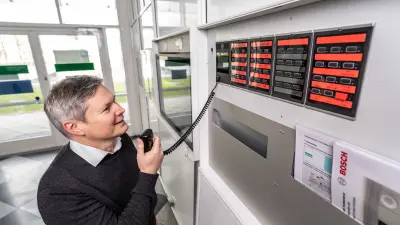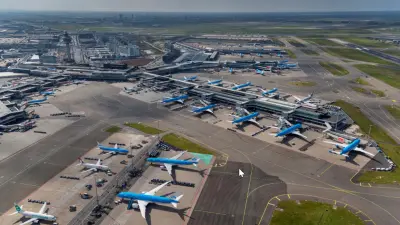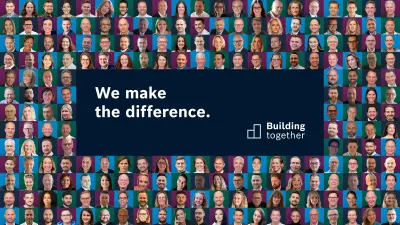Munich Airport relies on a networked public address and voice alarm solution from Bosch
Public address and voice alarm systems are key parts of airports’ security architectures. For implementing a new digital solution in its Terminal 1, Munich Airport opted for state-of-the-art technology and an experienced Bosch team. And now it’s confidently facing the future with enhanced security and efficiency.
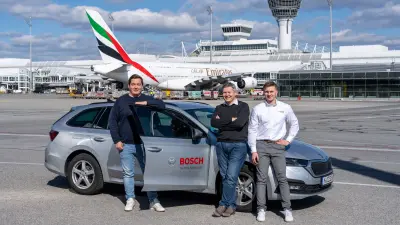
Munich Airport is a bustling place. With 31.6 million passengers a year and flights to 210 destinations in 63 countries in 2022, it ranks among Europe’s leading air traffic hubs. In 2023 it was hailed by Skytrax as the “Best Airport in Central Europe.” Construction projects pose special challenges in such a busy environment. Even more so when central security systems need to be renewed without interrupting ongoing operations. A recent collaboration between Munich Airport and Bosch Energy and Building Solutions involved replacing a legacy analog system in Terminal 1 with a new, leading-edge IP-based public address and voice alarm solution. “Making changes like this while operations continue all around is a complex undertaking. And this project was carried out by everyone involved with a great deal of know-how and good sense,” enthuses Michael Huck project engineer for security systems at Flughafen München GmbH, the company that runs the airport. “We’re very lucky to have Bosch as our partner, with its innovative technology and experience as a systems integrator.”
The first step for the Bosch team was to draw up plans. The heart of the new solution: the IP-based PRAESENSA public address and voice alarm system. It enables highly flexible, cost-effective everyday operations, also in very large implementations like those typical of airports. The new system was precisely tailored to the architectural conditions in Terminal 1 and configured to meet Munich Airport’s other requirements as well. These included integration with a preexisting management system and PAXmodular IP stations for voice announcements at the gates, all from the company of Sittig Technologies. This provider of customized solutions for complex networking software for voice communications has been collaborating with Bosch for many years.
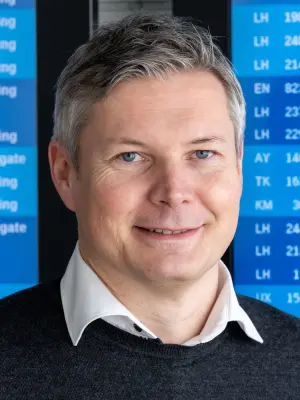
We made a point of choosing a product that would give us a technological edge. Now we’ll be using a state-of-the-art system for a long time to come.
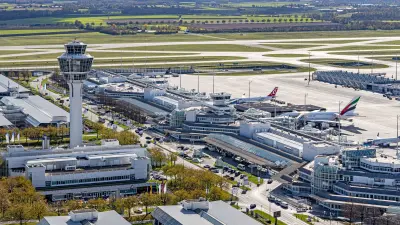
Functional solution and long-term use thanks to a technological lead
The networked public address and voice alarm solution in Munich Airport’s Terminal 1 is now the world’s largest PRAESENSA multi-subnetwork system. It is based on a large-scale, high-performance networking approach with multiple subnetworks that can be flexibly extended to centrally control up to a maximum of 3,000 PRAESENSA system components and 10,000 individual audio zones. The PRAESENSA systems for the terminal’s 23 equipment rooms and associated parking facilities were installed in more than 80 19-inch rack cabinets and connected to 14,000 preexisting speakers. The DIN EN 54-certified solution in Terminal 1 will be used for passenger calls, searching for missing persons, emergency warnings, and especially general announcements. In the event of a fire, the airport fire brigade can conveniently use a touch panel to make announcements in only the relevant parts of buildings at the airport. The system also scores points with an innovative amplifier setup that enables particularly efficient operation. Surpassing conventional multichannel systems, PRAESENSA reduces the need for amplifiers by intelligently distributing the available amplification power among all of the channels. This saves space and is highly energy-efficient. “We wanted reliable networking with good redundancy and a flexible solution that would let Munich Airport face the future with confidence. Also optimal was the fact that the existing audio zones with a total of 14,000 speakers around the airport could be easily integrated into the new solution. We were totally convinced by the overall package,” says Michael Huck. The system is also future-proof in the sense that it is straightforward to scale up as required.
Clever system migration
Migrating the system required a lot of attention to detail. “We replaced the entire central electroacoustic system, including the line harnesses, without interrupting operation of the rest of the system,” explains Alexander Schäffl, a systems integrator on the Bosch Energy and Building Solutions operations team at Munich Airport who was responsible for the technical implementation. Each of the 23 equipment rooms at Terminal 1 and in the parking facilities contains up to four proprietary Bosch switch cabinets. All of the loudspeaker lines for predefined areas converge there.
The special aspect at Munich Airport: the loudspeaker lines don’t just run from the switch cabinets to the loudspeakers, but also from there back to the cabinets. In case a technical problem or fault ever occurs in a loudspeaker or line, so-called end-of-line modules can pinpoint its exact location. “The standard we’re applying at Munich Airport would definitely also be attractive for other airports and large public buildings,” says Florian Halsner, the member of the Bosch team at Munich Airport responsible for planning and sales. “It saves the maintenance teams a lot of time because now they can perform measurements from the central control booth and quickly and easily narrow the search to track down the problem.”
The next step was to couple the existing analog system with the new state-of-the-art IP solution. Both were connected to the higher-level management system and temporarily operated side by side. The individual loudspeaker lines were then gradually connected to the new system. “We started in areas where announcements are rarely made. This approach paid off; in the end, transitioning to the new technology was fast and problem-free,” reports Michael Huck. Florian Halsner adds: “Bosch has clearly shown that we’re able to reliably conduct a migration project on this huge scale.” The project was successfully implemented by the responsible project leader, Matthias Zwickl, who has many years of experience under his belt coordinating large, complex construction projects.
Greater security and savings, plus efficient ongoing operations
Connecting everything to a higher-level management system has created enormous additional value. “The legacy system wasn’t capable of this,” says Michael Huck, adding in reference to the client’s benefits that “the PRAESENSA uplink now lets the terminal service and fire brigade talk to all parts of the entire airport from a single location.” And networking the individual systems has also opened up a host of other uses that deliver additional advantages, including improved safety and security. A case in point is the new control panel for the airport fire brigade. A 40-inch touchscreen displays a diagram of the entire airport, on which different areas can be selected for emergency announcements or even evacuations – if it ever comes to that, it will be easy to organize phased clearance of different areas to avoid creating a panic. This is a clear advantage that other large facilities can also profit from, like shopping malls, event venues, fairgrounds, and hotels.
Meanwhile the system is already being used on an everyday basis. The responsible teams need less time and use fewer resources to service the system. PRAESENSA is easy to parametrize via a web interface, allowing flexible, fast performance of these works. The sound quality has also improved noticeably, and so has the level of service provided to passengers. “Our aviation department is very happy about the fact that the new system paves the way for an automated public address system for boarding operations. Prerecorded announcements can be played in 14 different languages, and another four will be added soon,” says Huck.
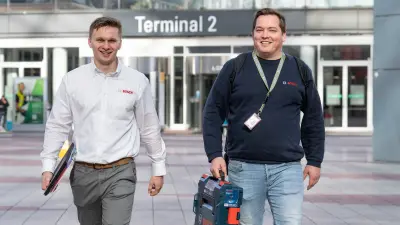
Bosch has been partnering with Munich Airport on projects ever since it opened in 1992. Thanks to the many years of on-site presence and experience the company has accumulated, it is intimately familiar with the airport’s requirements and processes. The Bosch team counts 15 members and works with a number of handpicked subcontractors to tend the fire and intrusion alarm systems, video cameras, and a system for operating doors that is visualized in a door management system together with the passenger control system for automatically controlling doors and escalators as required to maintain the required passenger flows. Airports constantly face new challenges owing to their demanding security requirements. “When you make an investment, it’s important for the new technology to grow with you while preserving the investments you’ve already made,” comments Huck. “This is especially true of airports, which are constantly evolving.”

